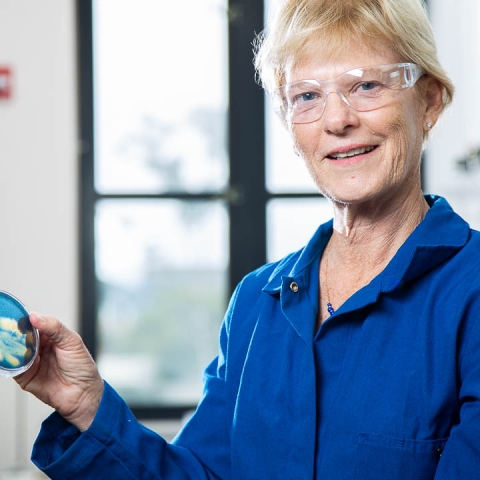Studying the different mechanisms marine plants and bacteria use to acquire traces of iron from sea water may help explain variations in phytoplankton productivity and increase understanding of the process by which the oceans absorb or release carbon into the atmosphere, a primary
factor in global warming.
This is the focus of work performed by UC Santa Barbara chemist Alison Butler and her research colleagues from the University of Delaware that was described in a paper published late last month in Nature magazine. The article, titled
"Competition among marine phytoplankton for different chelated iron species," outlines possible ways bacteria and other prokaryotes (cells without internal organelles) bind iron in comparison to diatoms and other eukaryotic (cells with organelles) phytoplankton.
"Since iron availability plays a critical role in phytoplankton growth, as well as in many other marine microorganisms---maybe even the entire global carbon cycle---we wanted to know what molecular mechanisms control iron uptake," said Butler. As a bioinorganic chemist, her role was to isolate the iron-carrying molecules from the bacteria, known as siderophores, and determine their structures. This had never been done before for open-ocean bacteria, though siderophores from bacteria living in fish guts and deep-sea mud had been described.
The researchers asked themselves, was there a difference in the type of iron complex used by eukaryotic plankton when compared to that used by prokaryotic bacteria? They analyzed a variety of compounds, including iron pyrrole (porphyrin) complexes. Overall, they found plankton much more efficient at acquiring iron from the porphyrin complexes than was bacteria.
"That was not so surprising," said Butler, "but we still do not know the details of how the plankton got the iron."
Bacteria acquired iron from a variety of siderophoric compounds, some of which they do not produce themselves. "That was surprising," Butler said. "The dogma has been that bacteria can only use their own siderophores, which have a specific uptake process, to capture and assimilate the iron. We are just beginning to understand the molecular basis of these very interesting differences."
Butler, who came to UCSB in 1986, and her research group have explored the discrepancy between iron availability in surface ocean waters and iron requirements of marine bacteria since 1990. By recently joining a National Science Foundation-funded consortium of 22 other scientists from other disciplines---the Princeton-based Center for Environmental BioInorganic Chemistry---she expects to extend her exploration many more years.




